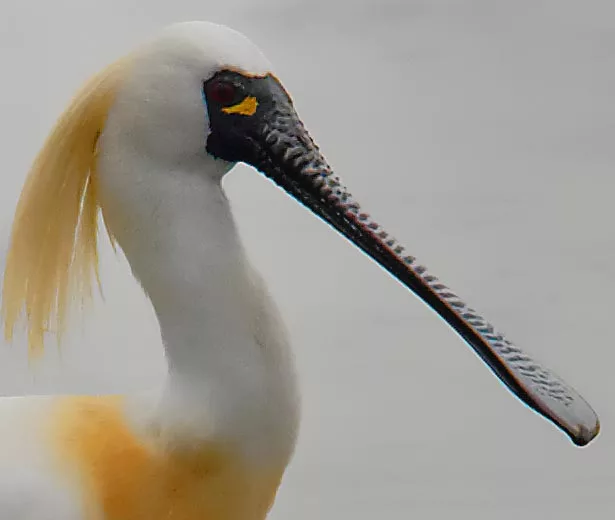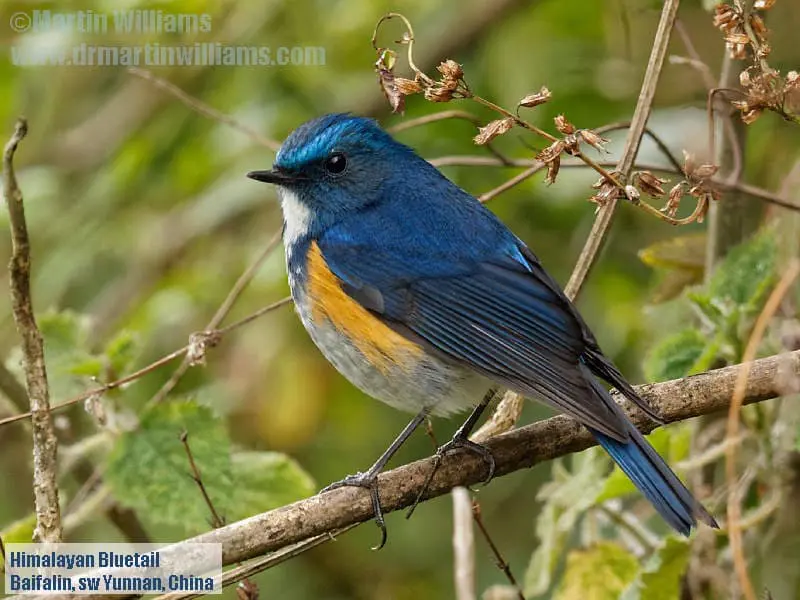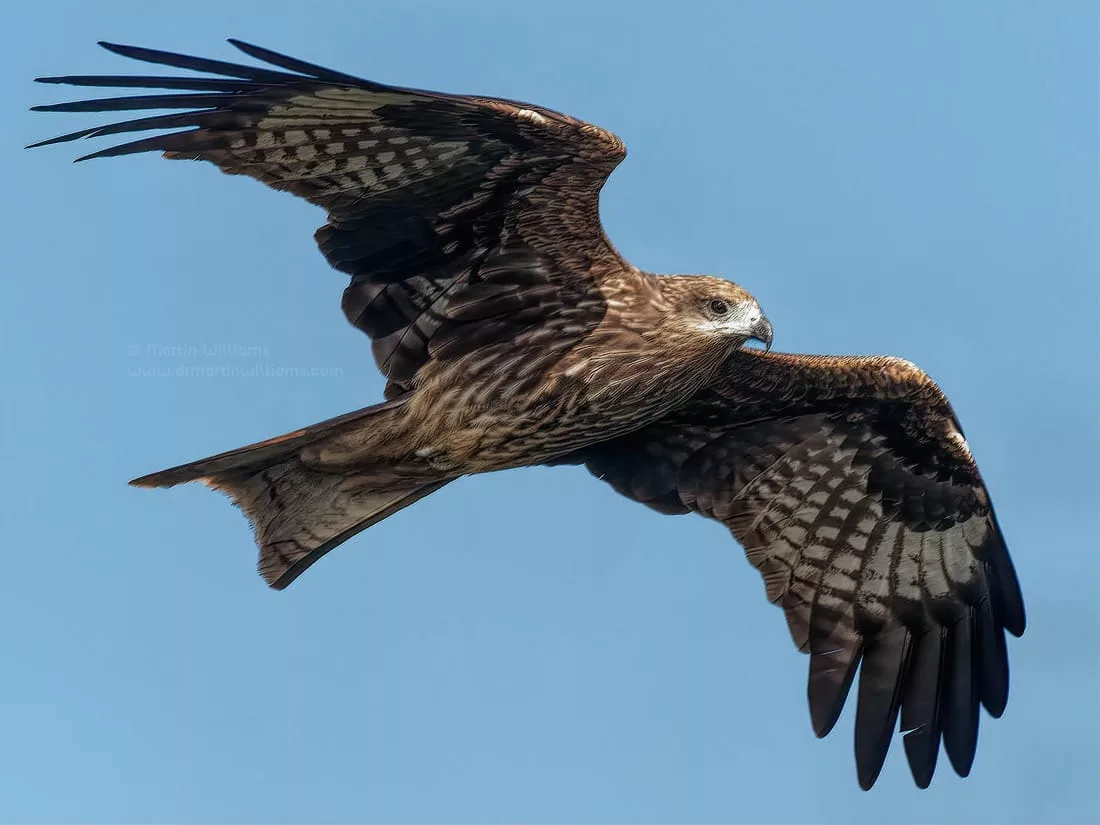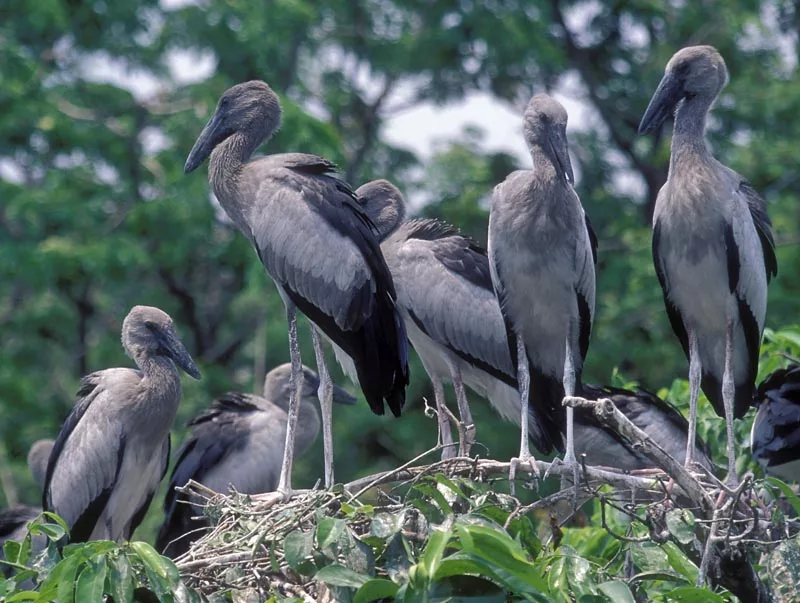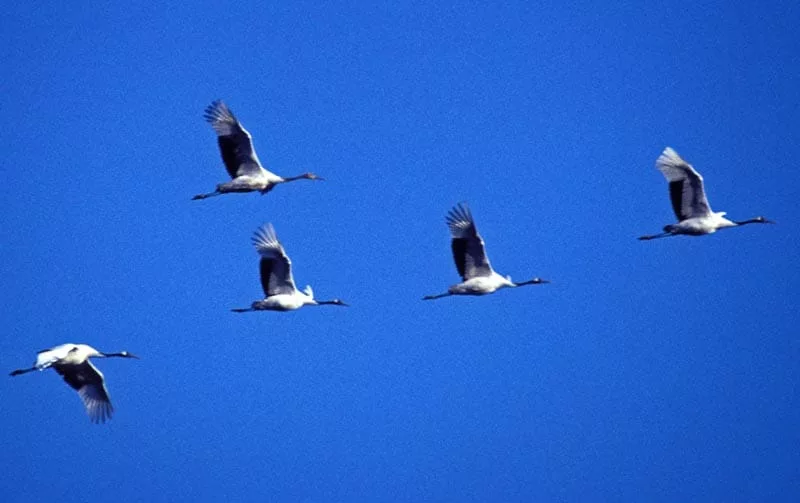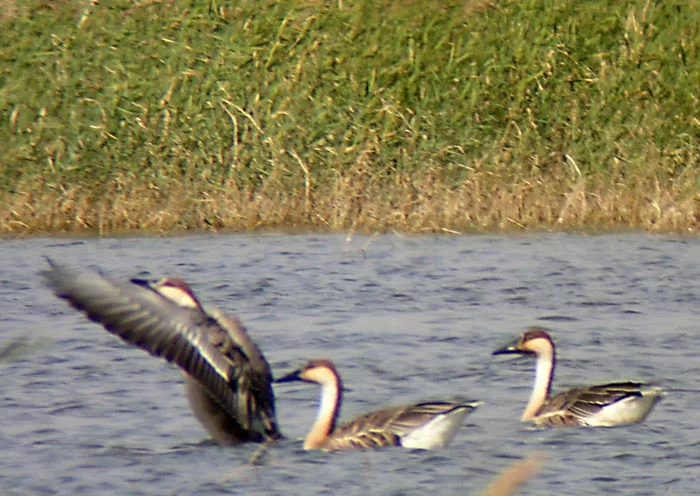Birders thought these East Asian birds were abundant, until they found out they were almost extinct
I climb a short, rough track to the top of an earth embankment, a high spot amidst the Chiku wetlands, some 16 acres of fishponds, creeks and lagoons on Taiwan’s southwest coast.A half-hour drive from the nearest city, this big, broad landscape usually feelsremote. But not today, as group after group of brightly dressed kindergartners pour out of coaches, swarm over wooden platforms and queue up at telescopes for a look at the most famous bird species in Taiwan.
“These are black-faced spoonbills and they are very rare,” explains local wild bird society chairman Chiu Nan-an, while a boy peers through a telescope at the white wading birds, each around two-and-half feet tall and standing motionless on long, black legs. Asleep, they bury their heads in feathers behind their necks. But one awakens, looks around and walks a few paces along the mudflat, showcasing its long spoon-shaped black bill with its mask of black skin at the base.
In recent years, the black-faced spoonbill has become something of a celebrity in parts of East Asia, especially Taiwan and Hong Kong.
But that wasn’t always the case. Until about 13 years ago, most people didn’t realize these birds were teetering on the brink of extinction. And although their future is still uncertain, for now the news is good: Today on the mudflat at Chiku, the spoonbill’s primary winter haunt, there are some 350 black-faced spoonbills – well over a third of the current world population but more than the known world total when birders first noticed the birds’ plight in the early 1990s. And spoonbill allies are forever devising ways to ensure the bird’s numbers keep rising. In one offbeat attempt at boosting awareness and concern for the birds, students entered “black-faced spoonbill” as a write-in candidate in Taiwan’s last presidential election.
[Updates: a January 2005 census recorded 1475 black-faced spoonbills.
While in early 2018 came news of ongoing decline in Hong Kong, after peak a few years before:
Endangered black-faced spoonbill numbers dwindle again as wetland habitats in Hong Kong and Shenzhen degrade]
Hong Kong birders were blase about the spoonbills
 When I first saw these birds, however, I didn’t think they were remotely presidential. It was early 1987, and I had just relocated to Hong Kong. An avid birdwatcher in my spare time, I made visiting Mai Po Marshes Nature Reserve, on the border of mainland China and Hong Kong, a priority. Walking on paths past fish and shrimp ponds and through mangroves to the fringe of Deep Bay estuary, I logged an impressive variety of birds, including pelicans, herons, shorebirds and ducks. At a pool beside the border fence, I also caught close-up views of four resting black-faced spoonbills. But the field guide in my hand indicated these birds were plentiful, so – like nearly everyone at the time – I paid them little attention.
When I first saw these birds, however, I didn’t think they were remotely presidential. It was early 1987, and I had just relocated to Hong Kong. An avid birdwatcher in my spare time, I made visiting Mai Po Marshes Nature Reserve, on the border of mainland China and Hong Kong, a priority. Walking on paths past fish and shrimp ponds and through mangroves to the fringe of Deep Bay estuary, I logged an impressive variety of birds, including pelicans, herons, shorebirds and ducks. At a pool beside the border fence, I also caught close-up views of four resting black-faced spoonbills. But the field guide in my hand indicated these birds were plentiful, so – like nearly everyone at the time – I paid them little attention.
Typically spotted in small parties, black-faced spoonbills are similar to the world’s five other spoonbill species – including the roseate of North and South America. Striding through shallow waters in muddy river mouths, lagoons and pools, spoonbills sweep partly open bills through water and silt to catch small fish and invertebrates such as prawns. When not feeding, they tend to group in quiet places to sleep. They also migrate.
At Mai Po, observers had noted since the late 1950sthat black-faced spoonbills arrived in autumn and left in March or early April, the season when adults of both sexes attract mates by sporting sulfur-yellow breast patches and identically colored shaggy plumes on the backs of their head.
 Exactly where they were headed on their northward migrations was unclear. The only known breeding colonies were on a handful of islands off the west coast of the Korean Peninsula, some 1,300 miles northeast of Hong Kong. In winter, black-faced spoonbills occurred at coastal sites spanning an arc through mainland China from southern Japan through Hong Kong and Taiwan to northern Vietnam – roughly akin to following the coast of South Carolina to the Yucatan Peninsula.
Exactly where they were headed on their northward migrations was unclear. The only known breeding colonies were on a handful of islands off the west coast of the Korean Peninsula, some 1,300 miles northeast of Hong Kong. In winter, black-faced spoonbills occurred at coastal sites spanning an arc through mainland China from southern Japan through Hong Kong and Taiwan to northern Vietnam – roughly akin to following the coast of South Carolina to the Yucatan Peninsula.
But political upheavals in China early last century and the closed society that followed turned the spoonbill’s assumed stronghold into a virtual black hole for ornithology. Until recently, to find out about many birds in China, researchers relied on old information, chiefly a book written by a British consul posted there in the 1930s. It described black-faced spoonbills as common. Hong Kong birdwatchers assumed this was still the case.
Until, that is, Peter Kennerley, an avid bird-watcher, turned detective. Kennerley had moved from his native Great Britain to Hong Kong in the mid-1980s. Soon after, he began compiling notes in his free time on where to spot north Asian specialties, including the black-faced spoonbill. “Basically there wasn’t any information on spoonbills, so I dug deeper,” he recalls.
Kennerley found that the black-faced spoonbill was close to extinction and estimated that there were no more than 288 left in the world – 90 percent of which wintered at only three sites: Vietnam’s Red River Delta, the Chiku wetlands in Taiwan and Hong Kong’s Deep Bay. He published his findings in the Hong Kong Bird Watching Society’s bird report in 1990. “This sounded the warning bells and prompted others to search,” he says.
 When Kennerley’s paper appeared in print, green groups, including the World Wildlife Fund for Nature (WWF) Hong Kong, were pushing for greater protection of Deep Bay. Thanks to Kennerley’s sleuthing, they now had black-faced spoonbills topping a list of bird species occurring there in globally significant numbers. Armed with the list, the groups successfully lobbied the governments of Great Britain and China to include the bay under the Ramsar Convention on Wetlands of International Importance, an intergovernmental treaty aimed at bolstering conservation and wise use of wetlands and their resources.The presence of black-faced spoonbills also helped stymie plans for new construction of houses and a golf course.
When Kennerley’s paper appeared in print, green groups, including the World Wildlife Fund for Nature (WWF) Hong Kong, were pushing for greater protection of Deep Bay. Thanks to Kennerley’s sleuthing, they now had black-faced spoonbills topping a list of bird species occurring there in globally significant numbers. Armed with the list, the groups successfully lobbied the governments of Great Britain and China to include the bay under the Ramsar Convention on Wetlands of International Importance, an intergovernmental treaty aimed at bolstering conservation and wise use of wetlands and their resources.The presence of black-faced spoonbills also helped stymie plans for new construction of houses and a golf course.
Satellite tracking in early 1998 and 1999 also stirred public interest in the birds, says Lew Young, Mai Po Marshes Nature reserve manager. Researchers had trapped and fitted birds in Taiwan and Hong Kong with radio transmitters, hoping they would lead them to a “new” breeding area. This didn’t happen – most birds headed to the west coast of Korea, where colonies were already known – but the project did generate a good deal of publicity. “The media latched onto the study,” says Young. “The birds with transmitters on their backs were photogenic.”
In the wake of the study, black-faced spoonbills became a high-profile species in a fight over a railway line planned through threatened wetlands near Mai Po. A record 252 black-faced spoonbills were spotted at the reserve in the fall of 2000, and the media carried the news widely. A local daily newspaper even splashed a half-page photo of spoonbills on its front-page. The following year, public pressure forced the railroad company to abandon plans for a viaduct and instead construct a less intrusive tunnel under a key part of the wetlands.
More recently, black-faced spoonbill fever has also spread to the nearby former Portuguese colony of Macau, where 36 of the birds spent the 2000-2001 winter at a marsh on partly reclaimed land. Forty returned the following year. Though the area is slated for a development with casinos, Young says the spoonbills’ presence has encouraged a groundswell of public support for conservation of the marsh.
“The spoonbill is a flagship species, used for protecting very important wetlands in Taiwan and Hong Kong,” says Lucia Liu Severinghaus, an ornithologist with Taiwan’s Academia Sinica who has spearheaded international efforts to study and protect the bird.
Black-faced Spoonbill a Star in Taiwan
 In fact, Taiwan is now the main stage for the drama surrounding the spoonbill. Thanks largely to the efforts of Severinghaus, the country has brought the bird into the international conservation arena. As a result, response by conservationists to the spoonbill’s plight has been quicker and the battles to save their habitat fiercer than elsewhere.
In fact, Taiwan is now the main stage for the drama surrounding the spoonbill. Thanks largely to the efforts of Severinghaus, the country has brought the bird into the international conservation arena. As a result, response by conservationists to the spoonbill’s plight has been quicker and the battles to save their habitat fiercer than elsewhere.
To find out more about birds’ current situation, I fly to Taiwan, arriving in the southern industrial city of Kaohsiung where the chimneys of giant steelworks and other factories belch out steady streams of smoke. Swathes of the plain along the island’s west coast have been similarly devastated, a negative result of Taiwan’s growing economy. So far, only Chiku has been spared – mostly because it is located away from major cities.
To get there, I pass through Tainan City with local bird-watcher Philip Kuo Tung-hui. Pointing toward what had once been a tidal inlet he says, “In the 1970s and 1980s, I saw 30 to 50 black-faced spoonbills here each winter.” Now, with most of the area filled-in, it houses a high-tech industrial park. In the fish and salt ponds that remain, herons, ducks and shorebirds are still plentiful, but spoonbills have become scarce.
Crossing a large creek, we turn left and enter Chiku: spoonbill country.Right away, we can tell that the city is proud of its local superstar; a restaurant’s exterior is decorated with three-foot high photos of the birds, and by the next junction there’s even a Black-Faced Spoonbill Education Centre, which boasts spoonbill videos and photo displays.
Kuo points to white birds in the fish pond we are approaching. “I think those are spoonbills,” he announces. We stop to watch them feed and count about 60 in all. They’re walking quickly forward, bills thrust into the water, bodies twisting as they swing their heads from side to side, using half-open bills to feel for and gulp down fish. The birds move as if they are choreographed, making it easy to see why some Taiwanese birdwatchers have nicknamed them “black-faced dancers.”
“We sometimes see adults teaching young birds to catch fish,” says Kuo. “An adult walks in front, catches a fish and drops it, so the juvenile behind can catch it.” Kuo figures the spoonbills must be hungry today – it’s unusual for them to be feeding in the early afternoon. Typically, they spend much of the day at the mudflat roost, flying off to feed closer to dusk.
 We pass a signpost capped with a spoonbill weathervane, which shows the way to the mudflat. Minutes later, we arrive at the custom-built spoonbill viewing platform on the embankment, near a washroom and a warden’s post. “The county government spent NT$1 million [US $28,600]on the facilities here,” says Kuo. It was done to entice visitors to Chiku after a large spoonbill flock was spotted in 1984.
We pass a signpost capped with a spoonbill weathervane, which shows the way to the mudflat. Minutes later, we arrive at the custom-built spoonbill viewing platform on the embankment, near a washroom and a warden’s post. “The county government spent NT$1 million [US $28,600]on the facilities here,” says Kuo. It was done to entice visitors to Chiku after a large spoonbill flock was spotted in 1984.
That year, Kuo confirmed the flock’s size by accompanying the local bird-watcher who discovered it. Together, they counted 121 birds in a single day, far more than anyone had ever reported at Chiku. After the publication of Kennerley’s paper in 1989, Kuo realized the Chiku flock was of global significance – it held almost half the world’s black-faced spoonbills.
Kuo became a founding member and first chairman of the Tainan Wild Bird Society in 1992. “At the time, there was hunting at Chiku, mostly of ducks but sometimes of black-faced spoonbills,” he says. “We petitioned the Council of Agriculture, and said there are rare black-faced spoonbills which shouldn’t be disturbed.” The next year, the government duly clamped down on waterfowl hunting. At around the same time, there were plans for a steel refinery, sited right over the mudflat. Petitioned by the bird society and other groups, which claimed that the refinery would destroy an area of critical importance for the spoonbill, the government rejected the controversial scheme.
Undaunted, the steel company allied with a petrochemical company to promote Binnan, a sprawling industrial park that would devour a 1,000-acre expanse of farmland, lagoon and shoreline just north of the mudflat. Conservationists protested that Binnan would destroy the Chiku lagoon and could pollute the entire wetland. Plans have since become “greener” but not green enough say protesters. The current county commissioner – who has publicly expressed his opposition to the industrial park – has proposed that the area be named a protected national scenic site. But at this writing, Taiwan’s Environmental Protection Administration has said it will approve plans for the industrial park, pending a revised final draft.
 Invariably, the protests over Binnan have highlighted the black-faced spoonbill. Huang Min-ching, a professor of statistics who is among the chief anti-Binnan crusaders and is also working on a book about spoonbills, has spearheaded many of the protests, bombarding the media with press releases. On one day during my visit, I find myself sitting among fishers who, instructed by Huang, raise fists and shout (in Taiwanese) “Protect Chiku! Protect the lagoon! Protect the black-faced spoonbill! Love Chiku! Love Taiwan! Down with Binnan!” Nearby, kindergartners swarm the embankment and Huang talks to reporters.
Invariably, the protests over Binnan have highlighted the black-faced spoonbill. Huang Min-ching, a professor of statistics who is among the chief anti-Binnan crusaders and is also working on a book about spoonbills, has spearheaded many of the protests, bombarding the media with press releases. On one day during my visit, I find myself sitting among fishers who, instructed by Huang, raise fists and shout (in Taiwanese) “Protect Chiku! Protect the lagoon! Protect the black-faced spoonbill! Love Chiku! Love Taiwan! Down with Binnan!” Nearby, kindergartners swarm the embankment and Huang talks to reporters.
 With the spoonbill’s rise to stardom, Taiwanese have taken to visiting this vantage pointin ever-growing numbers. In an old pillboxthat’s become a store, I meet Li Bin-hua, a retired electrician and nature-loving merchant, selling black-faced spoonbill paraphernalia – calendars, books, t-shirts, watches and puppets. “Perhaps 2,000 to 3,000 people visit here each week,” he says.
With the spoonbill’s rise to stardom, Taiwanese have taken to visiting this vantage pointin ever-growing numbers. In an old pillboxthat’s become a store, I meet Li Bin-hua, a retired electrician and nature-loving merchant, selling black-faced spoonbill paraphernalia – calendars, books, t-shirts, watches and puppets. “Perhaps 2,000 to 3,000 people visit here each week,” he says.
Believing ecotourism can help save Chiku and black-faced spoonbills, Huang Min-ching is hoping to boost visitor numbers by organizing “spoonbill safaris”in collaboration with local fishers. No one knows why the spoonbill’s population apparently has increased since the early 1990s and why counts at Chiku have risen to more than 530 birds recently [2008], but educational or commercial ventures like this could help ensure the species’ survival.
Right now, the black-faced spoonbills on the mudflat appear safe, unruffled by all the human activity nearby. As the kindergartners settle down to draw pictures of the creatures, the bird that had earlier caught everyone’s attention by walking a few paces comes to a halt. Then, its bill disappears as it tucks its head into its feathers, and goes back to sleep.
[This article appeared in the April/May 2003 World Edition of National Wildlife.]
Update, April 2024: the global population of Black-faced Spoonbill has reached over 6900, but Deep Bay has failed to keep pace with the increase, with around 300 this past winter: Black-faced Spoonbill global population stabilizes while Deep Bay proportion hits second lowest in history.






